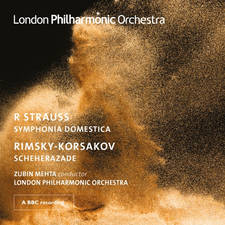The Full Works Concert: Thursday 26 February 2015, 8pm
Catherine Bott's concert of Hall of Fame favourites includes Samuel Barber's stunning Violin Concerto.
Tonight's Hall of Fame concert kicks off in lively style with the Arrival of the Queen of Sheba which opens Act III of Handel's oratorio, Solomon, and continues with Shostakovich's gloriously free, wistful Piano Concerto No.2. The piece was written as a birthday present for the composer's 19-year old son Maxim – himself an accomplished pianist. Either side of the soulful, heart-wrenching Andante are two vivacious movements, both full of style and an overwhelming sense of fun. Shostakovich apparently hid all sorts of family references within the music – jokes that only he and Maxim would truly understand.
It's likely Bach wrote his Cello Suites between 1717-23 when he was serving as Kapellmeister in Köthen. They are, without a doubt, some of the most emotionally intense pieces in the Baroque repertoire, making the most of the emotional depth of a solo cello and using a wide range of complex playing techniques. The most famous movement, the 'Prelude' from Suite No. 1 in G, is a great example of Bach's genius; there's no accompaniment, but the harmony plays out note-by-note like a musical journey, as chords are implied over the course of a bar rather than played.
We are off to the south-eastern corner of Finland next with Sibelius and his Karelia suite. In 1893 Sibelius wrote several works for a patriotic historical pageant by students of the University of Helsinki in Viipuri, Karelia. The composer subsequently compiled the suite of three pieces from the pageant's incidental music. He held the Karelia province in particular affection. In earlier years he had been inspired by its folk music, and later he was to spend his honeymoon there.
Given the great success of the Adagio for Strings, Samuel Barber could have been forgiven for resting on his musical laurels in the late 1930s. But the American composer was having none of it: he set about working on his only Violin Concerto in 1939, just a year after the Adagio’s premiere. Today, it’s the soulful, intense middle movement of the concerto that guarantees its enduring popularity. The violin seems at times to be almost wrestling with the orchestra, before reaching a position of serene contentment – only to find itself wrought in conflict again a few moments later.
Mozart never revealed his exact motivation behind A Musical Joke, but it's thought to be a bit of a dig at sub-standard players — the music is sprinkled with clumsy, mechanical and over-repetitive musical phrases, along with passages that mimic the effects of inaccurate notation and really poor performance.
Georg Frederic Handel: Arrival of the Queen of Sheba (from ‘Solomon’)
Paul McCreesh conducts the Gabrieli Players
Dmitri Shostakovich: Piano Concerto No.2 in F major
Piano: Denis Matsuev
Valery Gergiev conducts the Orchestra of the Mariinsky Theatre
Johann Sebastian Bach: Cello Suite No.1 in G major
Cello: Stephen Isserlis
Jean Sibelius: Karelia Suite
Andrew Davis conducts the Bergen Philharmonic Orchestra
Samuel Barber: Violin Concerto
Violin: Hilary Hahn
Hugh Wolff conducts the St Paul Chamber Orchestra
Wolfgang Amadeus Mozart: A Musical Joke
Andrew Manze conducts the English Concert













